Introducing GeoCoast: new coastal datasets from BGS
GeoCoast is an integrated GIS package of datasets designed to inform and support coastal management and adaptation.
20/04/2022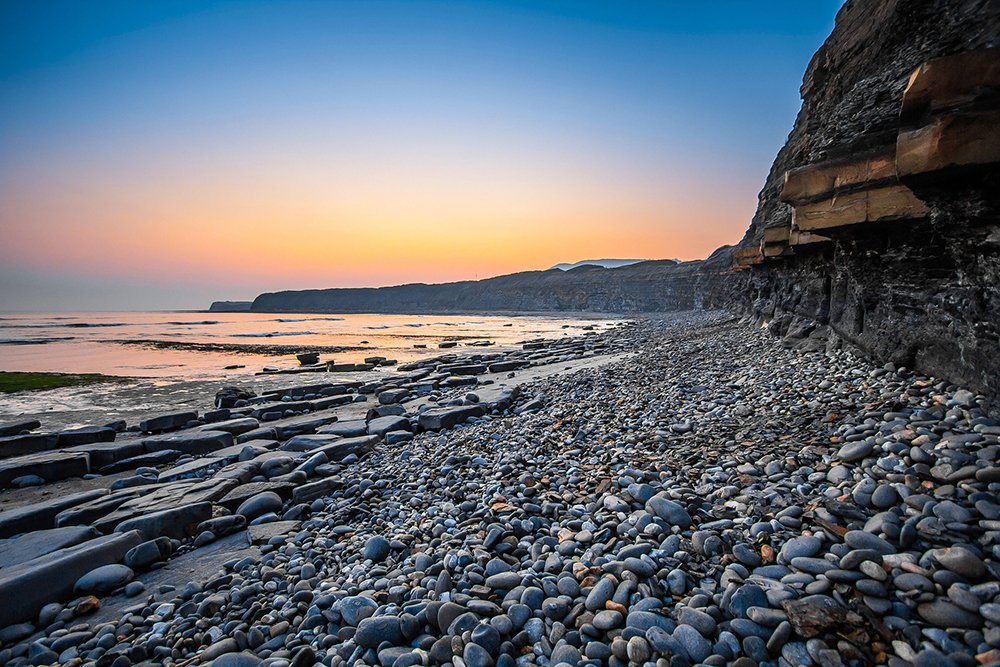
In our previous posts, we shared a broad overview of our coastal regions, with examples of our coastal environments and potential future changes. Here, we dig a little deeper into more specific vulnerabilities and focus on how our new GeoCoast data product can support coastal management and adaptation initiatives. This new dataset has been designed to assist future planning, with resilience considerations based on the natural geological characteristics of the coastal region.
Low-lying areas
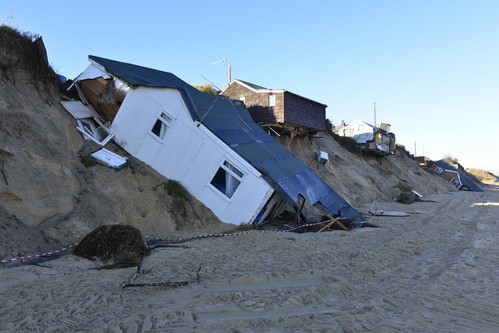
Damage caused by the winter storm surge of 2013, Hemsby, Norfolk. BGS © UKRI.
Low-lying coastal areas are already vulnerable to inundation (flooding by the sea). However, with increasing sea levels and storminess, impacts could be felt over a wider area than we think.
- Many dune sites are already in fragile equilibrium
- Damage to infrastructure, agricultural production and a loss of homes and businesses could be felt
- Groundwater levels at the coast are likely to rise, and the combination of rising groundwater and inundation from the sea, mean that flooding events could become more severe, extensive and prolonged
- Groundwater is also likely to become more saline (salty), causing added pressure on water resources, which in some parts of the UK are already critical (e.g. southern England)
Shoreline defences
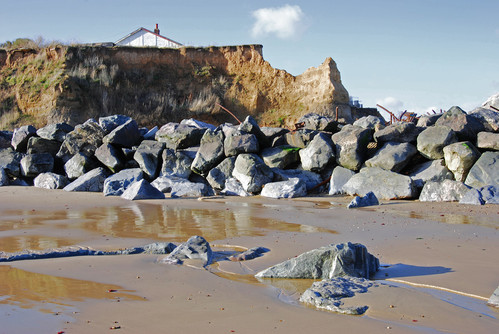
Boulders forming the latest sea defence efforts at Happisburgh, Norfolk. BGS © UKRI.
Shoreline defences and their management are also under threat in many areas. How long can we continue to repair defences or implement new schemes; to what extent can we manage the realignment — or should we let nature take its course and adapt rather than resist? In a 2015 report, the Environment Agency and Defra detailed their long-term costing tool to help understand whole-life costing in flood risk management, including coastal erosion and protection.
There are many factors affecting our coastline and its resilience to these factors has been an ongoing debate for many years. Climate scenarios (UKCP18) predict that sea levels will continue to rise, wave heights will increase and freak storms might become more regular events by 2080 and 2100.
Human influence
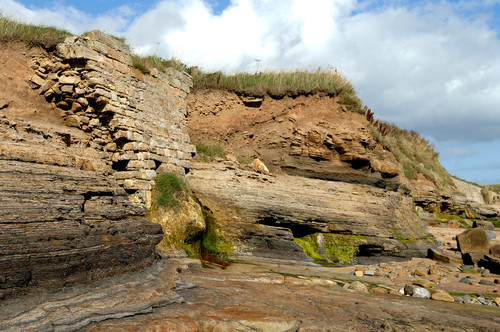
Crumbling sea wall at Howick Haven, near Alnwick, Northumberland. BGS © UKRI.
Humans may come and go but the underlying, fundamental natural deposits — the geology — will always remain an important factor to consider. A sea wall might be currently protecting weak sediments, but if that sea wall is breached or no longer maintained, we need to know where and what is vulnerable and how we can adapt the area to be more resilient.
Impacts of climate change
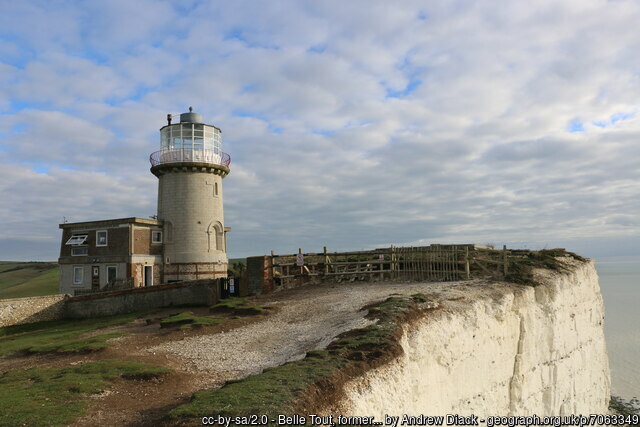
Belle Tout Lighthouse on the edge of the white chalk cliffs of East Sussex.
The effects of climate change have been seen around our coastline: Happisburgh in Norfolk has lost many houses (around 35 homes) over the years and Norfolk has a long history of coastal erosion dating back centuries, for example with the so-called ‘lost villages of Norfolk’ (Eccles; Keswick; Waxham Parva; Newton; Foulness; Ness; Shipden, and Clare). Birling Gap in Sussex has lost its terraces and the Belle Tout Lighthouse, perched above the English Channel, was moved 17 m inland in 1999 to protect it from the failing cliff.
Important structures and assets are strongly protected and have multimillion pound budgets to accommodate this. For example, the Bacton sandscaping scheme in 2019 cost around £22 million, raising the beach level by about 7 m in places, and protects the gas terminal and adjacent village. It is estimated it will only be effective for the next 20 years.
The National Trust has funded several rebuilds of the harbour wall at Mullion Cove, Cornwall, costing over £2 million, as winter storms become more frequent and stronger. The trust has recognised that there may come a point where rebuild is no longer financially possible.
How will the GeoCoast data product help?
GeoCoast is an integrated GIS package of datasets designed to inform and support coastal management and adaptation. Targeted at coastal practitioners, including regulatory bodies, local authorities, asset owners and also home owners who want to be better informed, GeoCoast can be used to underpin coastal decision making and planning relative to coastal inundation, erosion and climate change impacts. The datasets are compatible with shoreline management plan areas.
Coastal erosion

Happisburgh in Norfolk has some of the fastest-eroding coastline in the UK. BGS © UKRI.
Coastal erosion is a real issue and is only set to increase under future climate change scenarios. There are some 133 km2, or 15.5 per , of coastline that are classed as having a high susceptibility to erosion, much of which are located around the east, south-east and north-east coasts. A further 195 km2, or 22 per cent, are classed within the moderate-high category. Some are defended; others are not.
Even if defences are maintained, this is a staggering amount of coastline under threat and there are some 30 000 properties within 25 m of potentially highly susceptible coast. Counties such as Lincolnshire, Hampshire, Norfolk and Lancashire have a high percentage of low-lying, weak, coastal landforms that are at potential risk from increased storminess and wave attack.
GeoCoast includes information on the morphology, behaviour and vulnerability of the coastline, underpinned by its geology and its coastal context (shape; slope; range, etc.) We have carried out a detailed analysis of the coastline sediments and cliff sections, and identified the changes of coastal stratigraphy that are stacked in cliff sections.
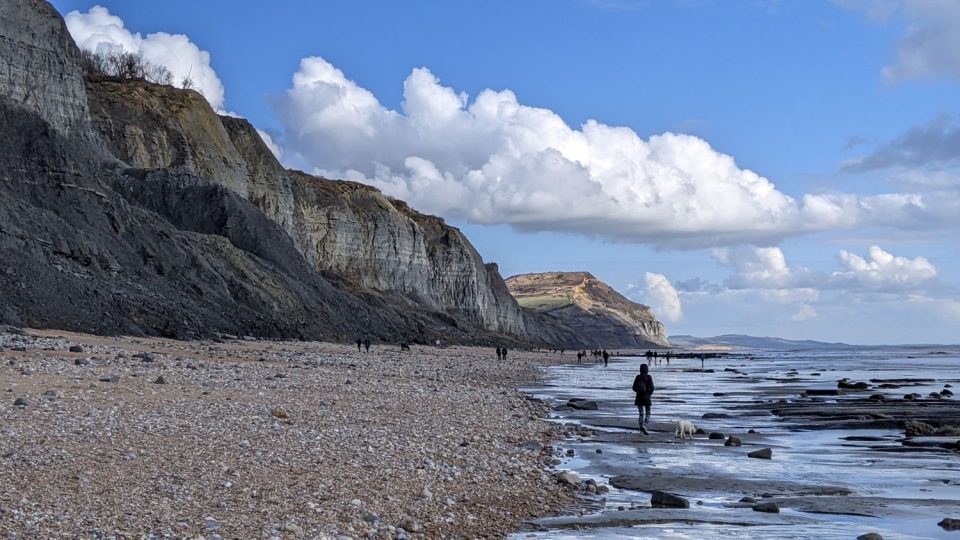
Cliffs of the Jurassic Coast at Charmouth, Dorset. The different properties of the separate rock formations lead to different heights and slope angles in the cliffs. © Jacqueline Hannaford.
Geology maps only identify the uppermost geology, whereas GeoCoast considers the whole sequence from beach level or sea level, to the top of the cliff or coastal deposit. For example, parts of the Jurassic Coast in Dorset have sequences, from beach level to cliff top, of:
- Charmouth Mudstone Formation
- Eype Clay Member
- Downcliff and Thorncombe Sand Members
- Gault Formation
- Upper Greensand Formation
Each of these lithologies has different properties and different levels of resistance to coastal erosion, which, in turn, affect the resilience of the coastline and how it responds.
Coastal subsidence
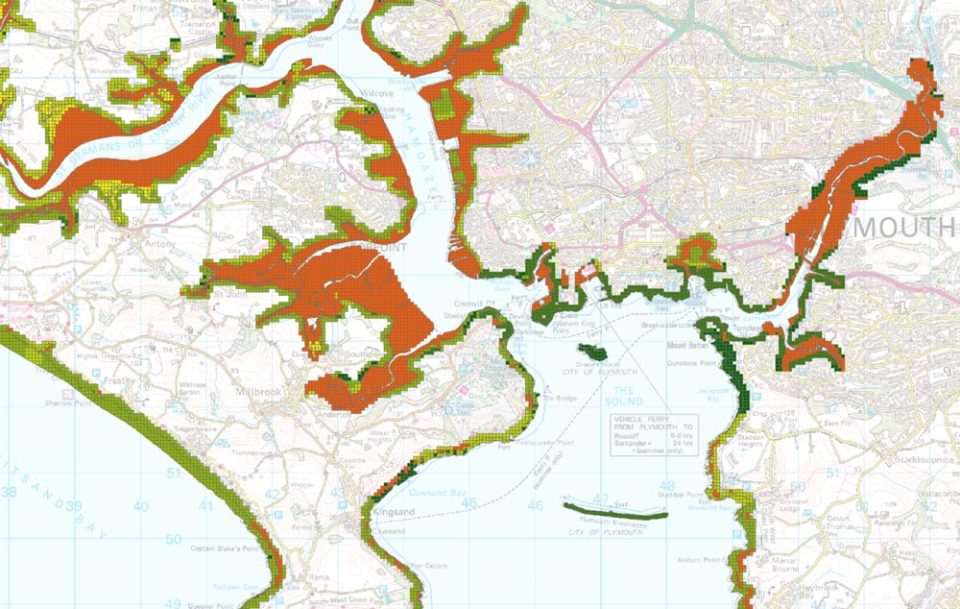
Sample of GeoCoast at Plymouth, Devon. BGS © UKRI — contains OS Data © Crown Copyright 2022.
The potential for coastal zones to undergo subsidence due to natural processes of compaction, dissolution, and shrinkage of geological deposits, has been linked with variations in sea level.
The coastal subsidence analysis combines satellite-measured movement with lithological data to generate levels of potential and measured movement (mm/yr).
Coastal floods
We have carried out extensive characterisation and modelling of the coast of Great Britain, considering many aspects of the coastal zone and its underpinning geology and sediments. Future sea-level rise has been modelled using UKCP18 SLR scenarios (RCP4.5) to provide an estimate of coastal inundation (nationally) of approximately 7258 km2 by the 2050s, 7768 km2in the 2080s and 8145 km2 by 2100.
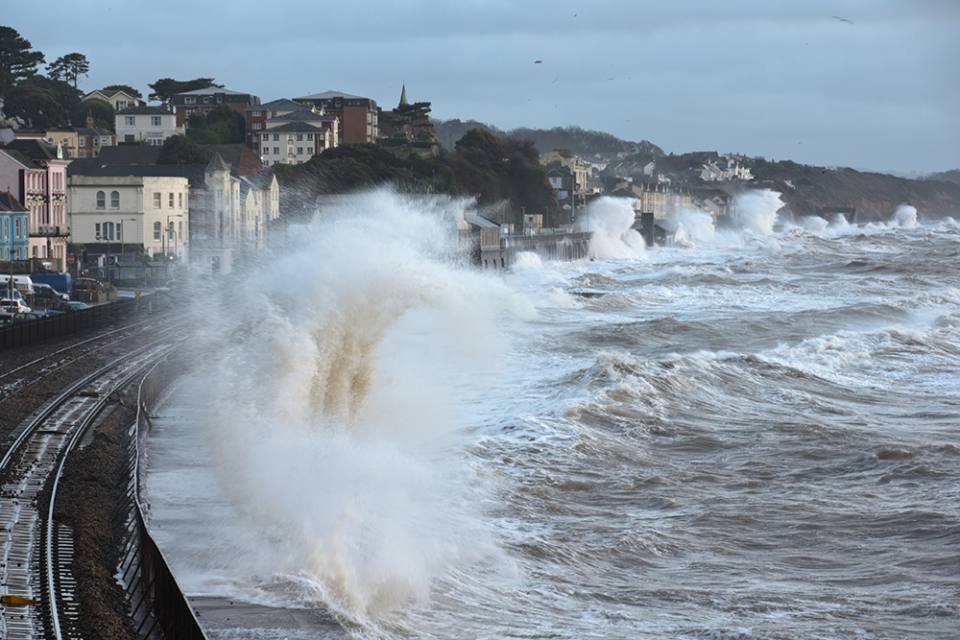
Large waves batter Dawlish, Devon, during a high tide. Photo © Moorefam.
Looking at the worst-case scenario and not taking into account defences, our data also suggests that some one million properties are at potential risk from inundation by 2050, increasing to 1.25 million by the 2080s and 1.35 million by 2100 if no protective measures are implemented.
More examples of the datasets can be viewed in our case studies, available as ESRI Storymaps.
To find out more about our GeoCoast data product, including to arrange sample datasets or licensing, please get in touch with us at digitaldata@bgs.ac.uk.
Read previous entries in this blog series:
- Six changing coastlines and how climate change could affect them
- Sea level rise and coastal erosion: what’s the real impact?
Join us for our GeoCoast launch event
Join our data products team for a live webinar on the 28 April 2022, and discover more about our new data product to underpin coastal decision making, resilience and adaptation. > Register online
About the author

Kathryn Lee
Geologist and BGS Informatics product portfolio manager
Relative topics
You may also be interested in
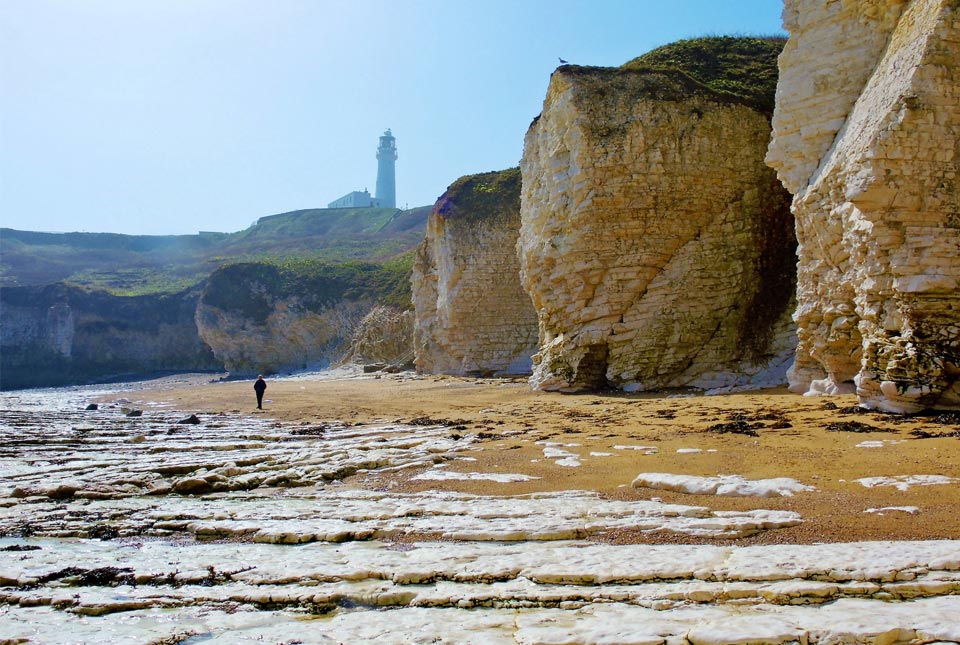
New BGS datasets for coastal management, planning and adaptation in the face of climate change
BGS GeoCoast is a package of geospatial datasets designed to provide information on the geological conditions and constraints around the coastline of Britain.
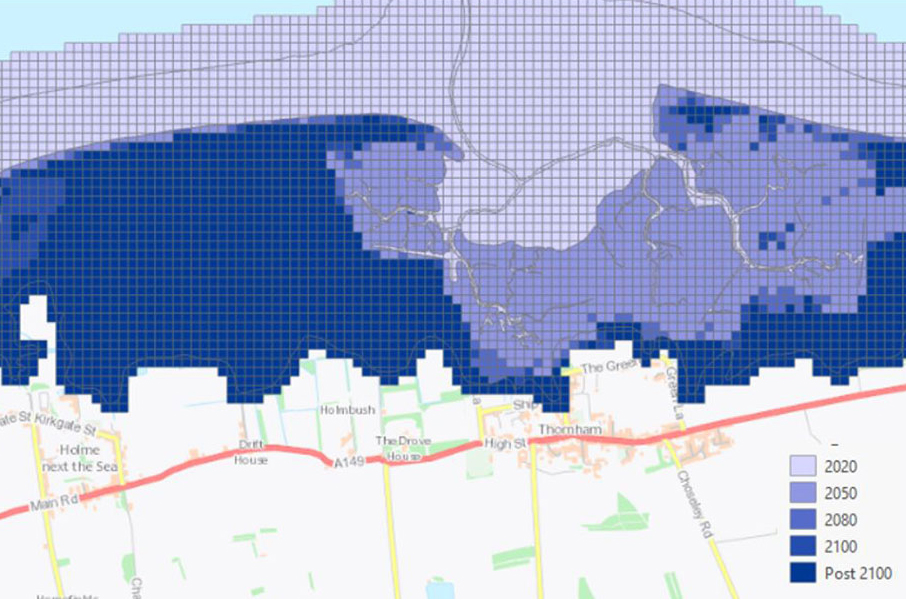
GeoCoast Premium
GeoCoast is an integrated GIS package of datasets designed to inform and support coastal management and adaptation.
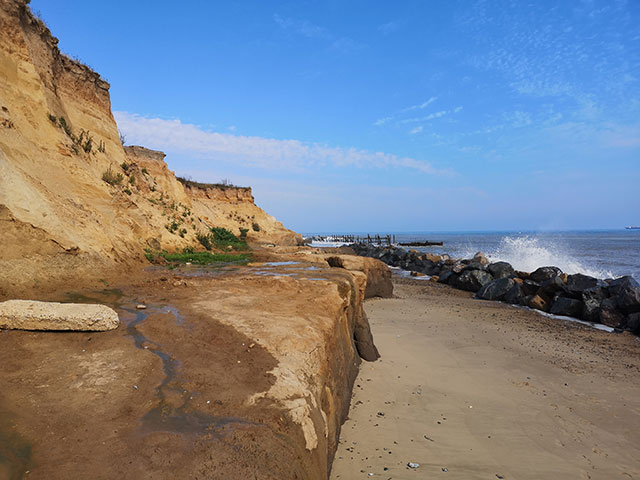
GeoCoast Open
GeoCoast Open provides a range of historic images and diagrams extracted from our archives, memoirs and other publications, which can provide a reference for coastal change.
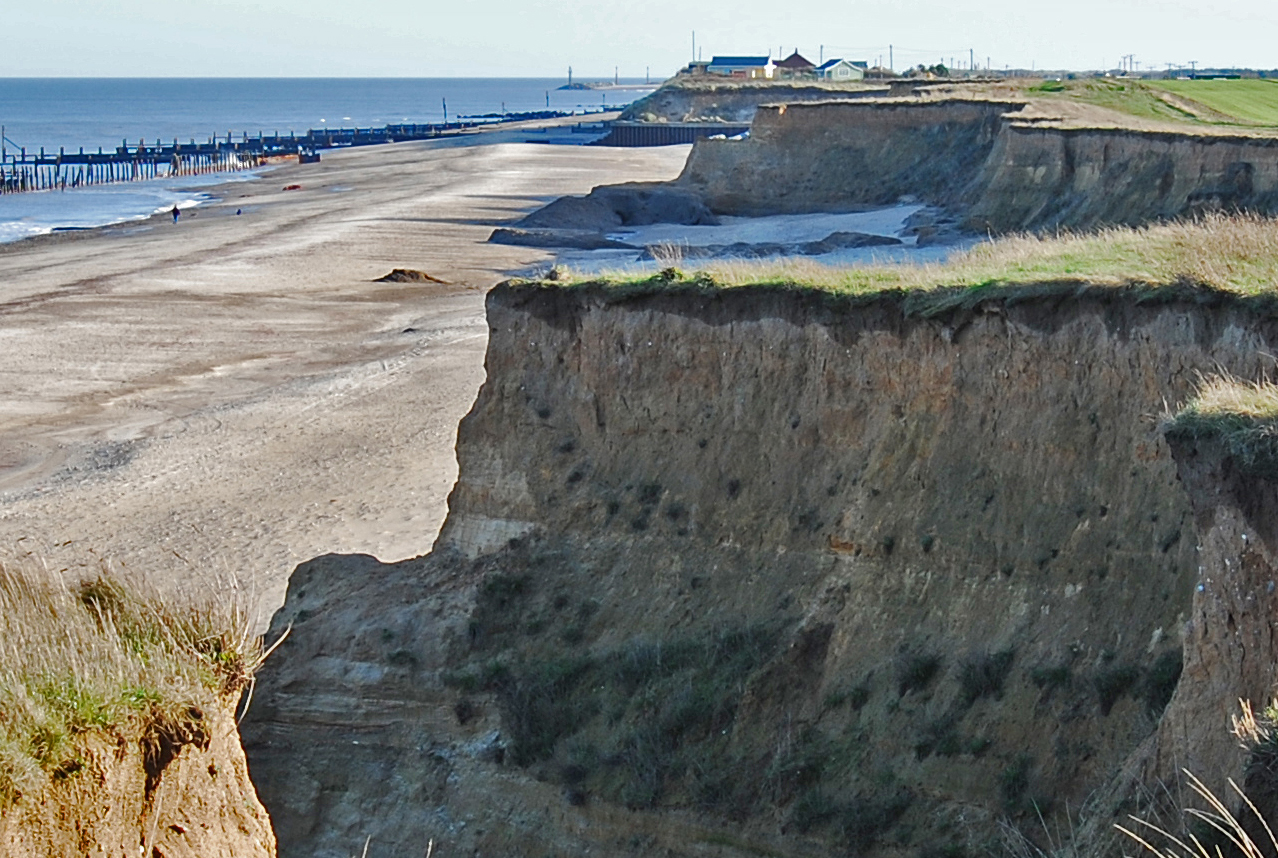
Coasts and estuaries geohazards
Providing independent and expert geoscientific tools and advice to assess different adaptation options to coastal flooding and erosion.
Related news
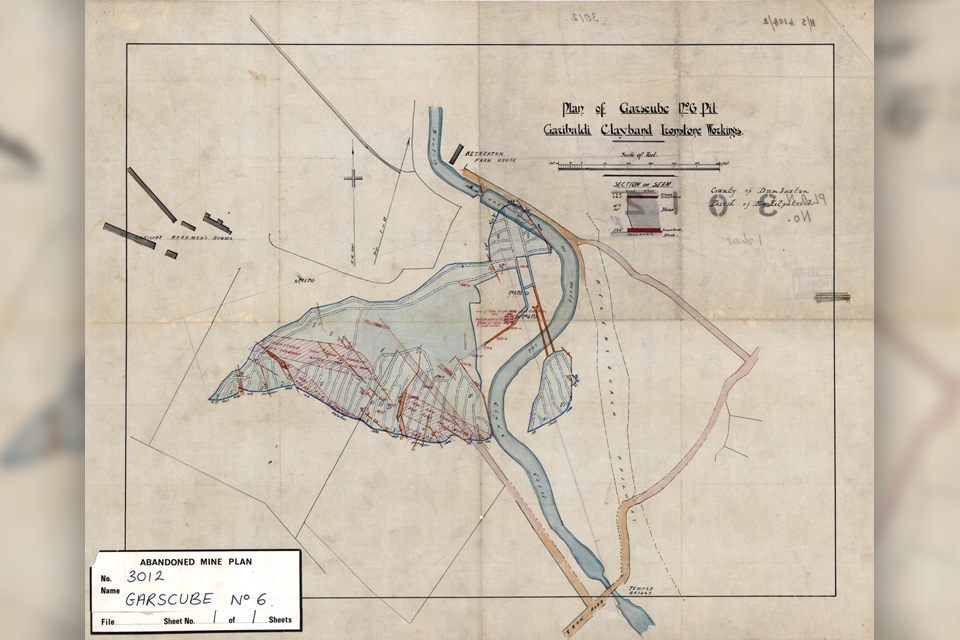
Release of over 500 Scottish abandoned-mine plans
24/06/2025
The historical plans cover non-coal mines that were abandoned pre-1980 and are available through BGS’s plans viewer.

New collaboration aims to improve availability of real-time hazard impact data
19/06/2025
BGS has signed a memorandum of understanding with FloodTags to collaborate on the use of large language models to improve real-time monitoring of geological hazards and their impacts.
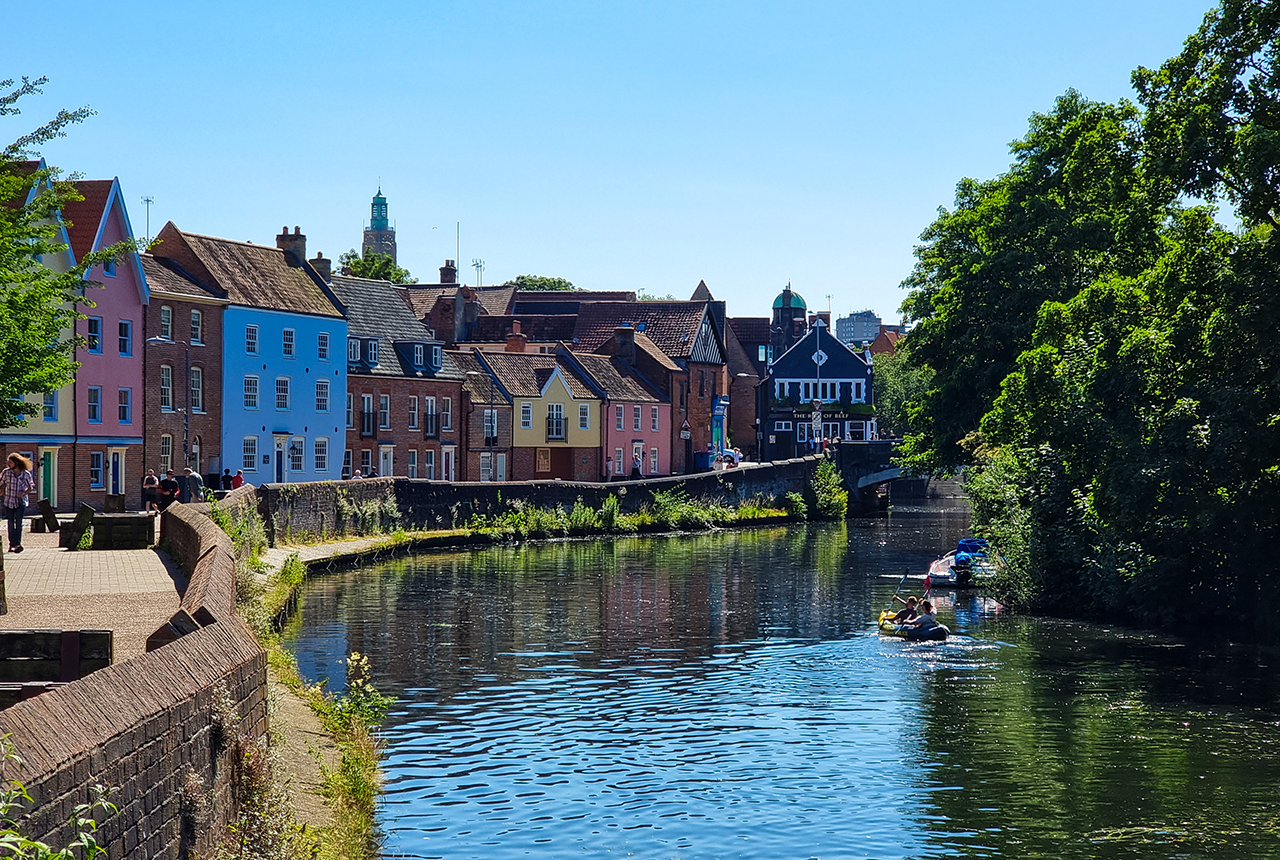
Modern pesticides found in UK rivers could pose risk to aquatic life
17/06/2025
New research shows that modern pesticides used in agriculture and veterinary medicines have been found for the first time in English rivers.

Goldilocks zones: ‘geological super regions’ set to drive annual £40 billion investment in jobs and economic growth
10/06/2025
Eight UK regions identified as ‘just right’ in terms of geological conditions to drive the country’s net zero energy ambitions.
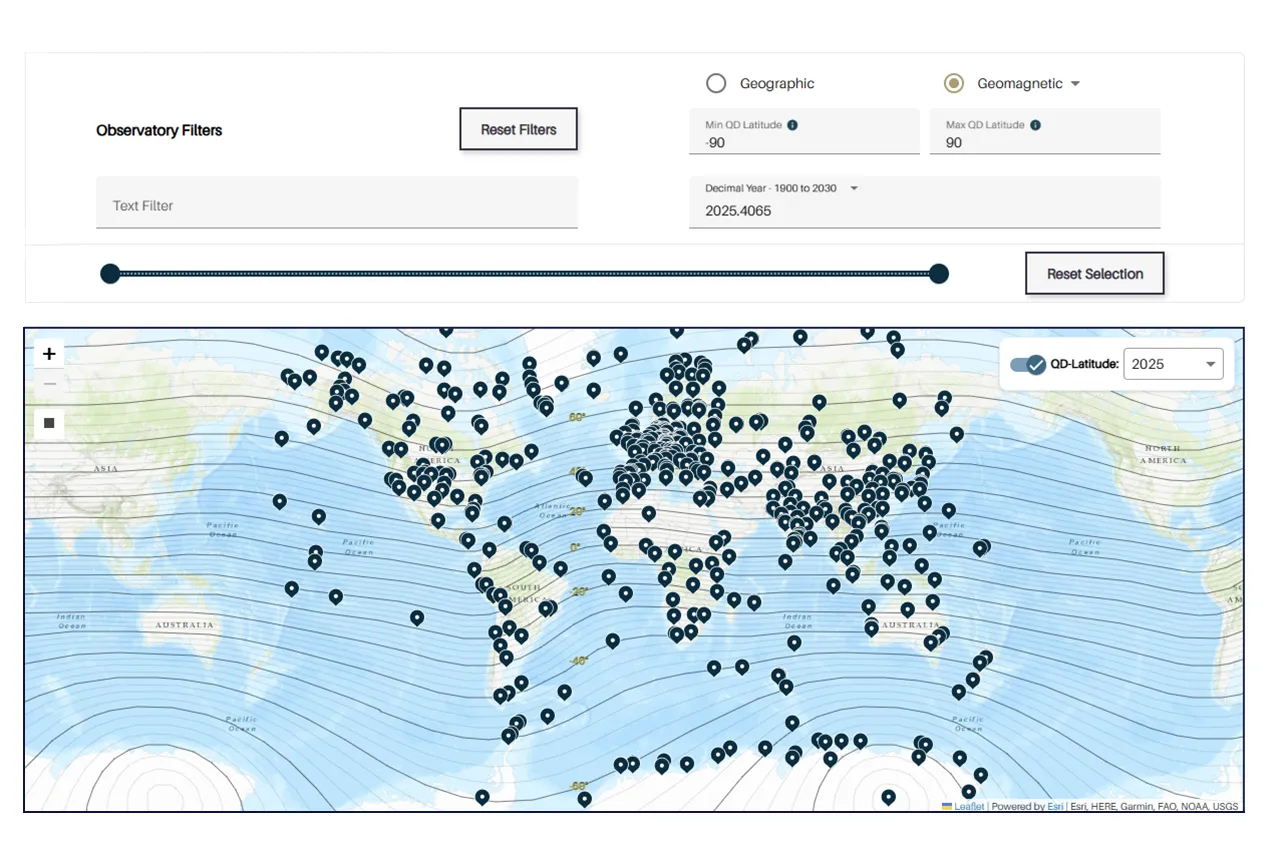
Upgraded web portal improves access to geomagnetism data
02/06/2025
BGS’s geomagnetism portal, which holds data for over 570 observatories across the world, has received a significant update.
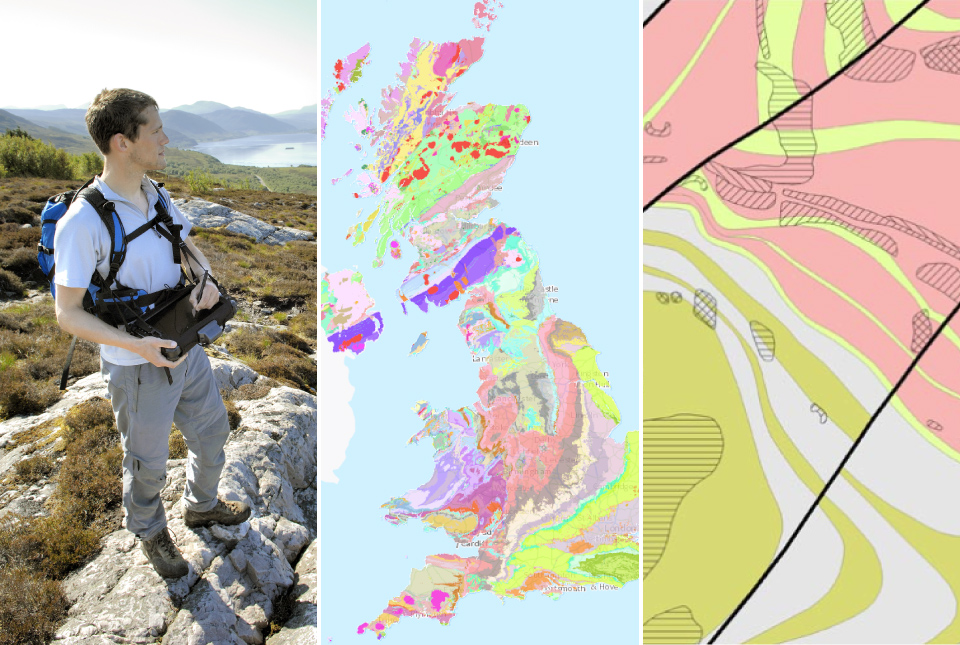
BGS digital geology maps: we want your feedback
29/05/2025
BGS is asking for user feedback on its digital geological map datasets to improve data content and delivery.
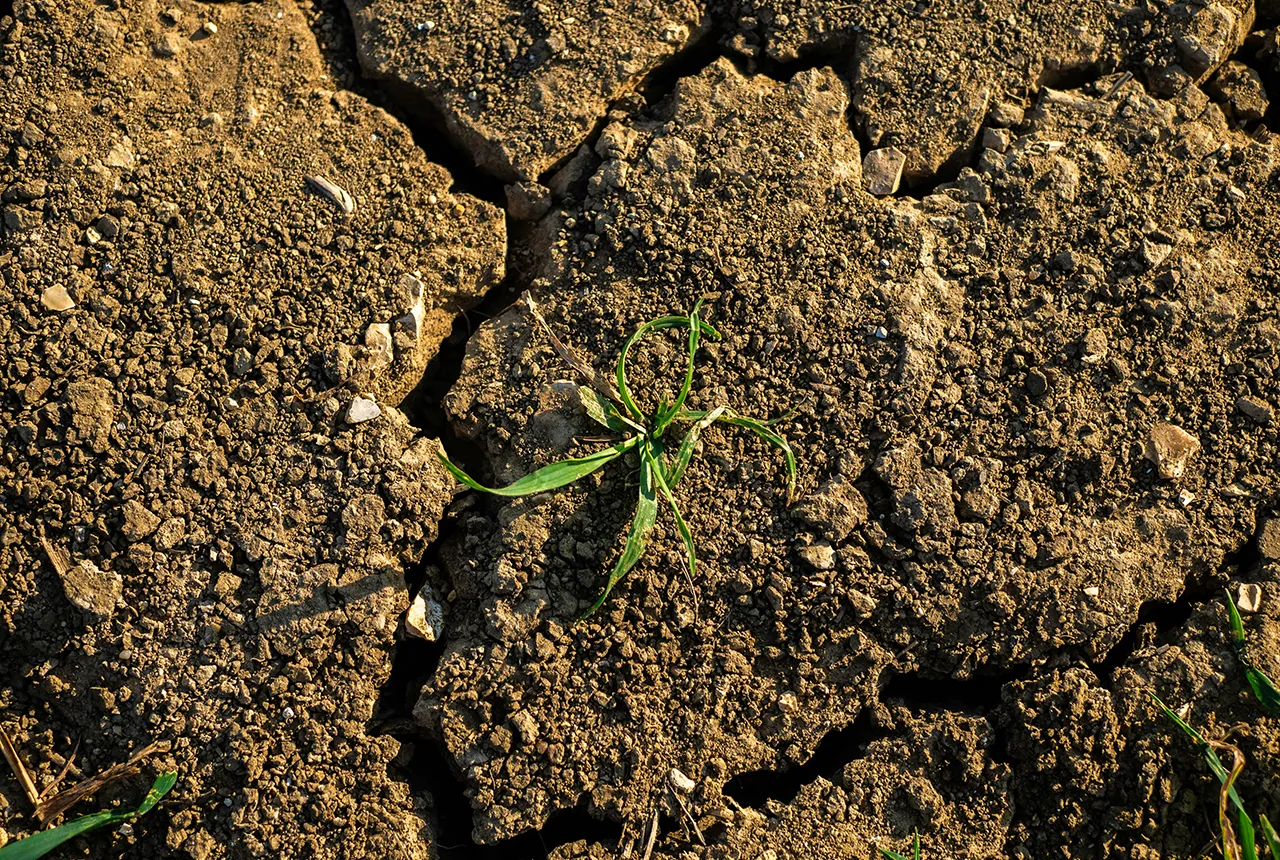
What is the impact of drought on temperate soils?
22/05/2025
A new BGS review pulls together key information on the impact of drought on temperate soils and the further research needed to fully understand it.
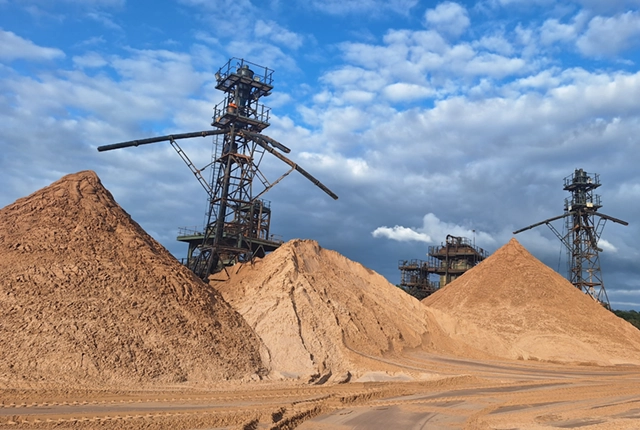
UK Minerals Yearbook 2024 released
21/05/2025
The annual publication provides essential information about the production, consumption and trade of UK minerals up to 2024.
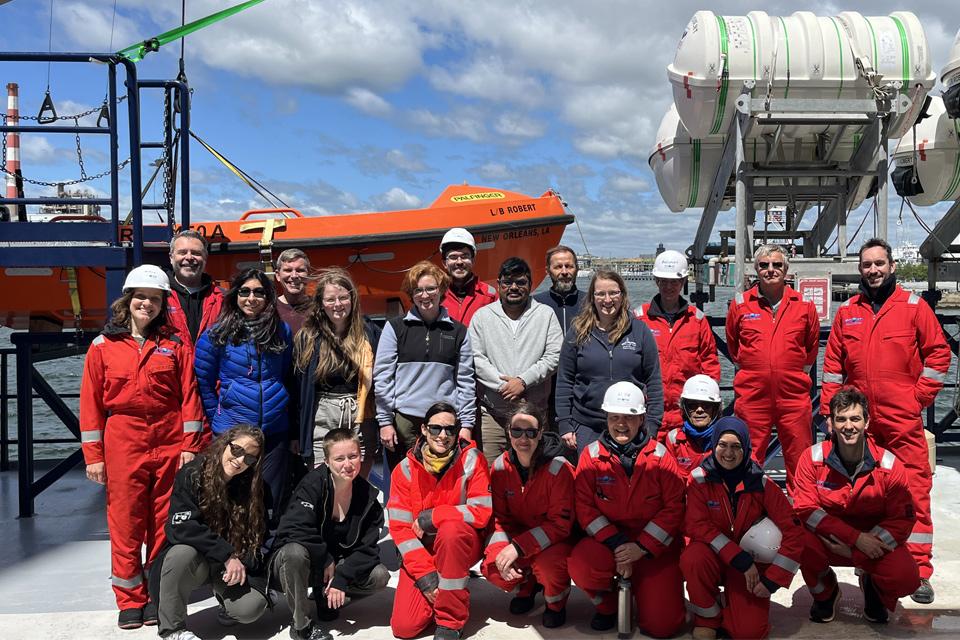
BGS scientists join international expedition off the coast of New England
20/05/2025
Latest IODP research project investigates freshened water under the ocean floor.

New interactive map viewer reveals growing capacity and rare earth element content of UK wind farms
16/05/2025
BGS’s new tool highlights the development of wind energy installations over time, along with their magnet and rare earth content.

UKRI announce new Chair of the BGS Board
01/05/2025
Prof Paul Monks CB will step into the role later this year.
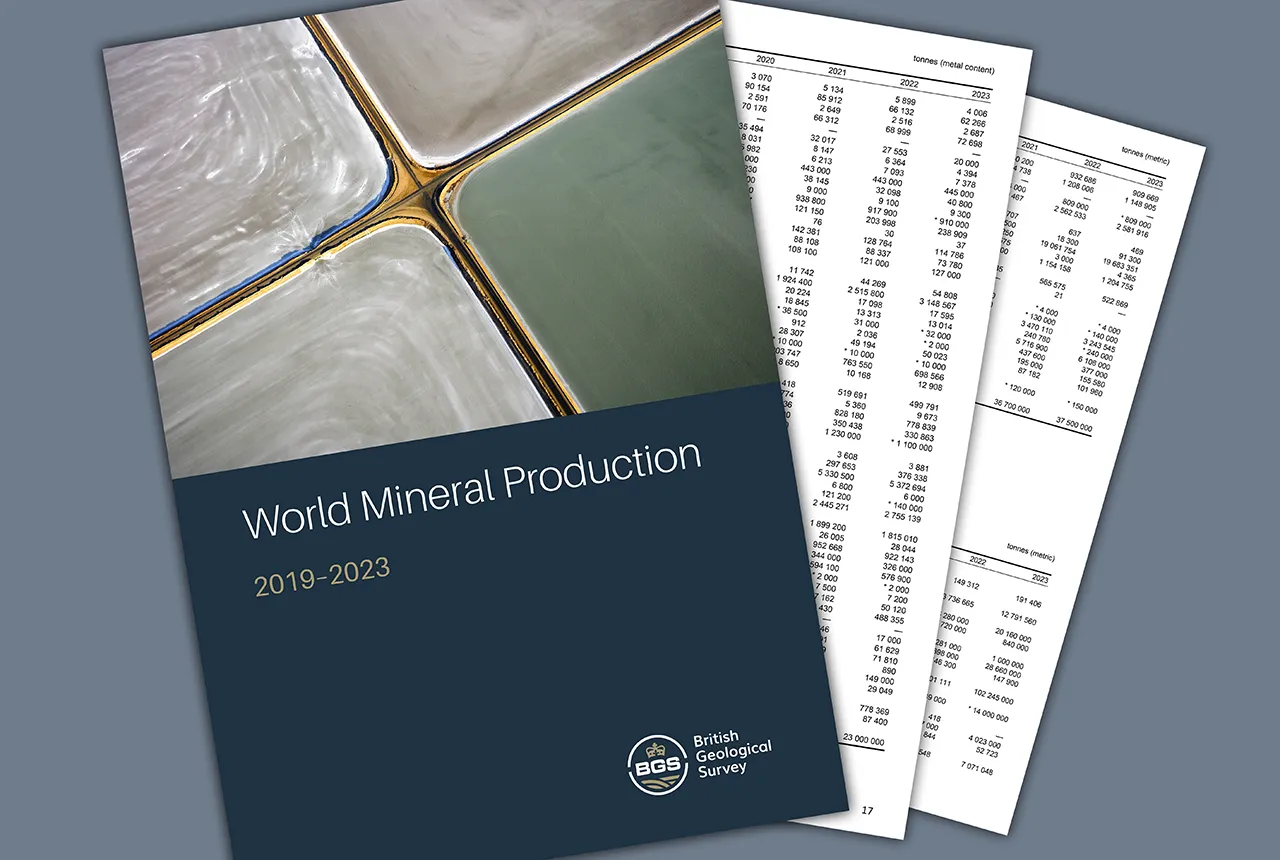
Latest mineral production statistics for 2019 to 2023 released
28/04/2025
More than 70 mineral commodities have been captured in the newly published volume of World Mineral Production.



